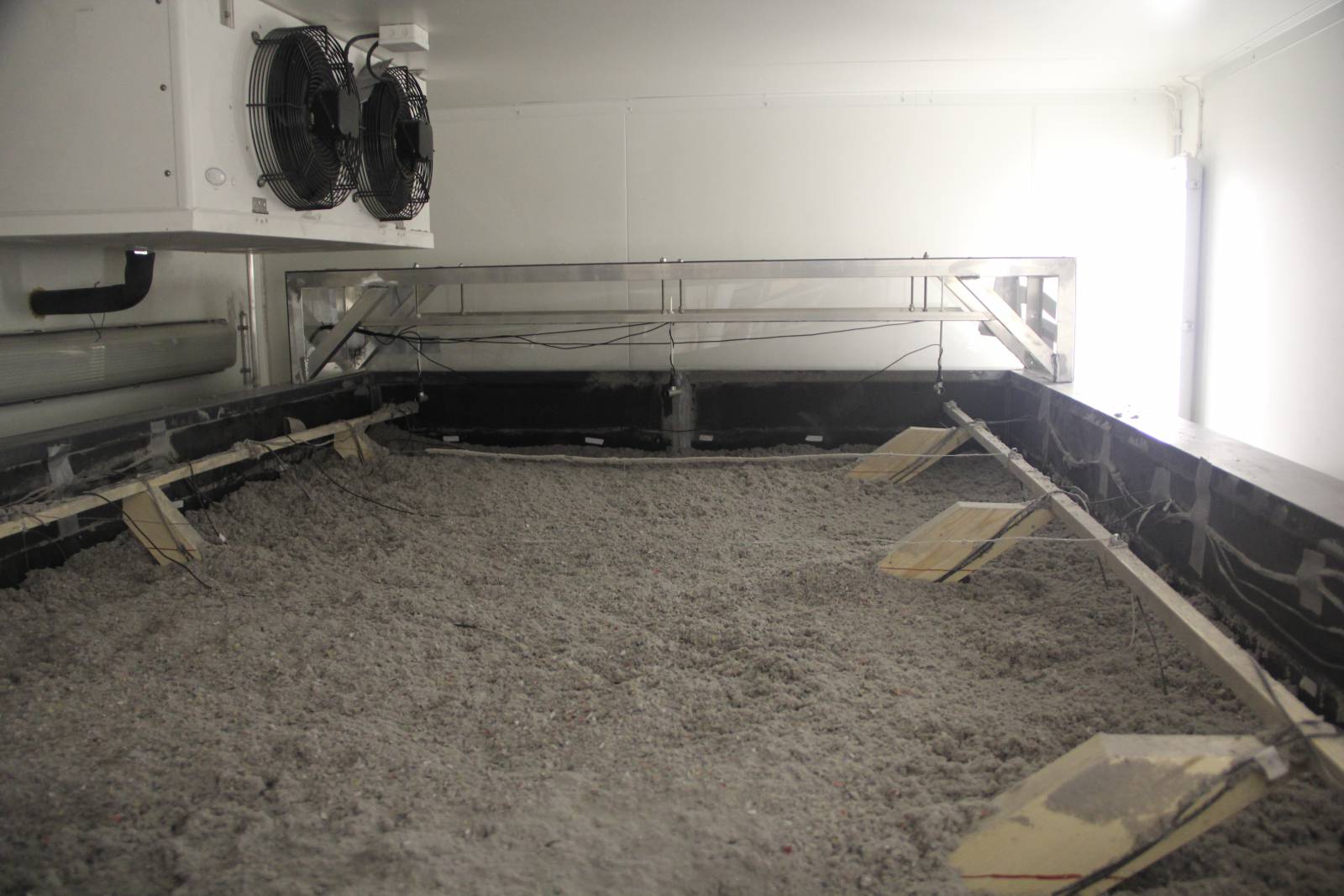An article by the Tampere University building physics research group on the effects of internal convection on the thermal insulation properties of roofs insulated with loose wool was published in the Energy and Buildings -journal. The article was written by Project researcher Henna Kivioja, who responsible for the project, and Professor Juha Vinha. According to the study, the heat loss caused by the internal convection in the insulation material can significantly lower the thermal resistance, especially in loose glass wool. The results are notable because in current European standards the amount of internal convection is assumed to be much smaller in roofs, and this article is reportedly the first international peer-reviewed article about the subject.
The research was part of the COMBI-project, which ended in 2018, and was done as laboratory experiments on equipment designed by the building physics research group for studying the building physical performance of roofs. The study confirmed the presumption that inside a roof convection flow is caused by cold air flowing down near the edges and warm air rising up in the center of the roof. Convection inside an insulation layer is caused by temperature differences and gravity, and also appears in an insulation layer installed on an airtight plastic film. The phenomenon was detected in loose glass wool already with a temperature difference of 20 °C. According to Vinha, the heat loss due to convection can even be 50 % higher compared to the heat flow caused just by conduction. Contemporarily the efficiency of insulation materials is usually only assessed based on conduction, and convection is ignored.
Loose glass wool and wood fibre insulation were studied with thicknesses of 300 mm and 600 mm. Other variables were the temperature difference over the structure, air flow on the surface of the insulation, and the roof trusses. According to the study the internal convection in glass wool is much higher than in wood fibre insulation in the conditions of the experiments. For the denser wood fibre insulation the single factor growing the internal convection the most is increasing the temperature difference. Correspondingly, for glass wool those factors are increasing the air flow and removing the trusses from the structure.
Internal convection is an issue especially for lightweight glass wool, but the density of the material is not the only factor. In previous research the wood fibre insulation had been installed by hand, which had caused there to be significant internal convection. This time the insulation had been installed with an insulation blower, and the heat flow only increased 0-10 % due to the convection. This is most likely due to the insulation fibres orienting themselves differently during the blowing, says Vinha. However, for glass wool the installation method had no significant effect. So, the structure of the insulation can also affect the amount of convection. For denser sheet insulation convection’s significance is minor, and in closed cellular insulation materials such as styrox and urethane it doesn’t appear at all.

